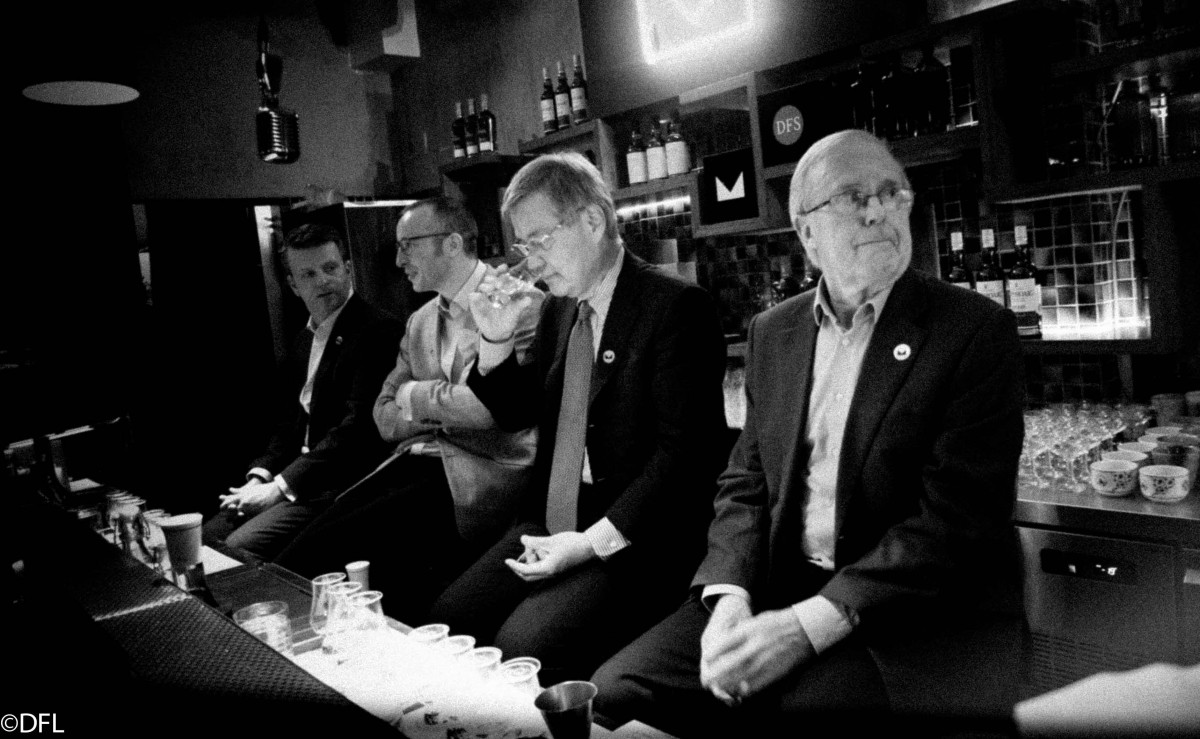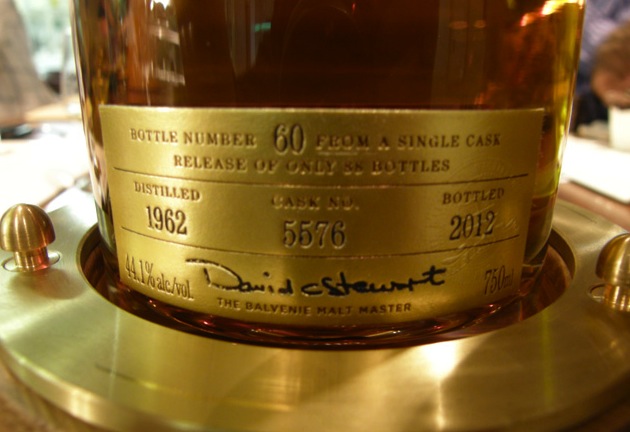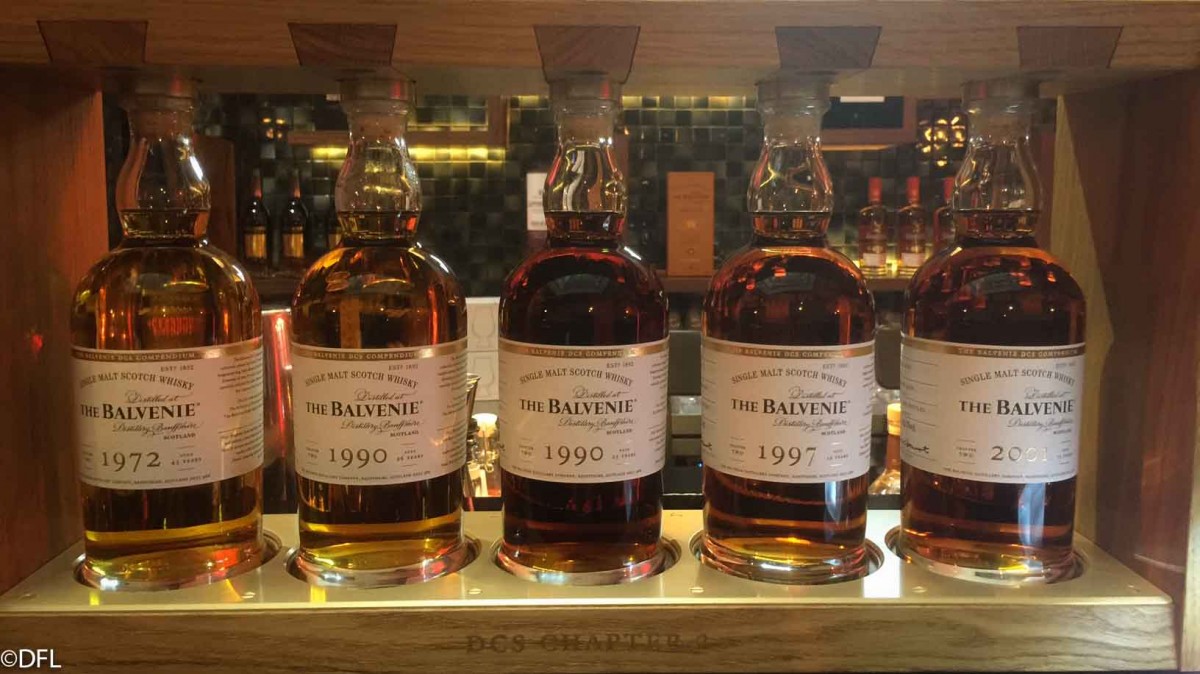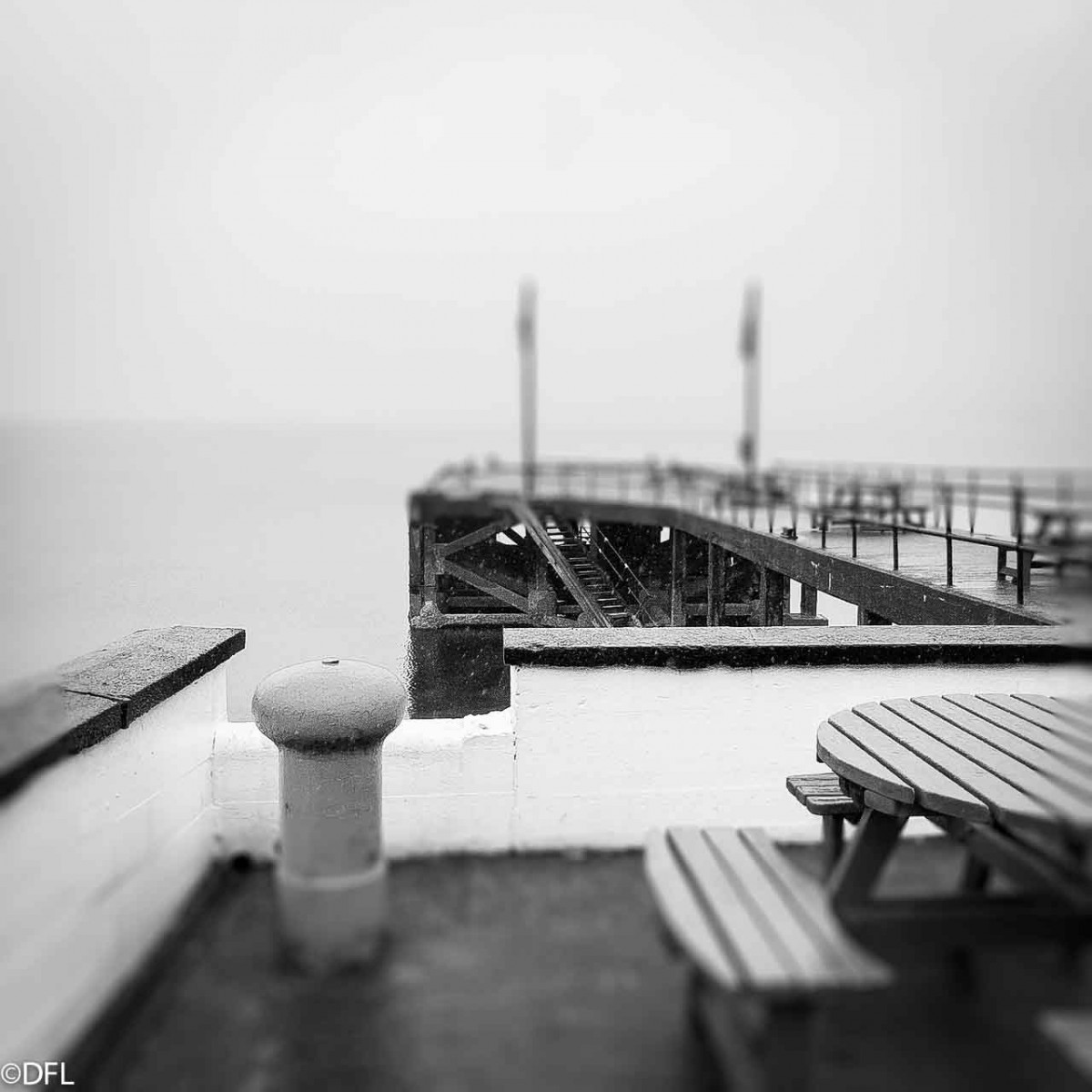
#489
LEGEND: AN INTERVIEW WITH DAVID STEWART OF THE BALVENIE
03 May 2017 By David Fuhrmann-Lim
Exclusive! As the Malt Master of The Balvenie, David Stewart’s accolades are aplenty (you can google). We spoke to him when he visited Singapore for the DFS Masters of Wines and Spirits event, for which he was a special guest.
As the Malt Master of The Balvenie, David Stewart’s accolades are aplenty: An Icon of Whisky, a Master of the Quaich, the Grand Prix of Gastronomy by the British Academy of Gastronomes, and in 2016 he was awarded an MBE for his services and innovations to the Scotch industry. He’s also one of the nicest people ever.
His 53 years of service is unsurpassed but by a handful; he’s credited with having one of the best and most experienced noses around, and recognised for the development of double cask maturation in the 80s. We spoke to him when he visited Singapore for the DFS Masters of Wines and Spirits event, at which he was a guest. He also spoke with his peers about innovations – the young ‘uns sure have plenty to learn!
Parched: Congratulations on the MBE, I know it was some time ago (July 2016), but nonetheless, congrats!
DS: It was last July, I got a letter back in November 2015, to tell me I was being awarded the MBE. It came as a big shock, and a surprise, I never expected it, but after I got it, I was very proud to have it. The Queen pinned the medal to my lapel, I had a short conversation with the Queen, asking me about my job, so yeah, it was a lovely day, I took my wife and my daughter there as well.
Did you speak to the Queen about whiskies – does she have a favourite?
DS: Well she asked me the questions actually, asked if I liked whiskies, so I said ‘yes I like working in a whiskey company, when I’m working I’m nosing whiskies’, and she asked, ‘nosing whiskey?’, I said ‘yeah, sniffing whiskey from a nosing glass’.
She said, ‘Can you tell much from nosing a whiskey?”
I said, ‘Yeah, you can pretty much tell everything!”
And so she laughed a little bit and said, ‘very good, very good’. And that was it, she shook my hand and off I went.
Speaking of nosing, I read somewhere that you must have nosed 400,000 whiskies, maybe?
DS: Yeah we worked that out, the samples over the years, the average over a day, over a five week day, yeah so I’ve nosed a lot, not just Balvenie, but Glenfiddich, all over the distilleries, finished samples, cask samples, single barrels, there’s a lot over my time.
Is there something to nosing, maybe a couple of tips, you could give to someone who’s just starting out, or maybe even a professional – who could learn a thing or two?
DS: You really need someone there who could point things out to you, maybe mentor you, it’s not something you could learn overnight, or even a few weeks. It’s something you gradually pick up, cause you need to nose all the different sides of the process, from new spirit to aging whiskey, the expressions, the bottling, the finished samples, there’s a lot of different stages in the process of producing whiskey. I had a 10-year apprenticeship, 10 years with my boss, from the 60s, to learn how to nose, to learn to tell American oak from European oak, how whiskey evolves in different ages, ensuring your product remains consistent, cause that’s the main objective, make sure it tastes the same, that’s all again done by nose, something that, because of my long experience, I’d know if there’s some slight variation in the consistency.
So you trust your nose a lot more than your taste?
DS: Yes. We’re not tasting, we’re rarely tasting, we’re looking at 30 whiskies a day, all different parts of the process, so yeah, I trust my nose.

With regards to the Balvenie 50, that commemorated your anniversary, was there something particular about that cask, that you thought, ‘well, this is the one that represents me the most’? Because there must have been a bunch of other 50-year-old casks–
DS: –well as you can imagine, for 50 year olds, there aren’t hundred of casks, we had a few casks, and I selected the one that appealed to me the most (cask #5567), that I thought we should bottle. It’s an European oak, a hogshead, it was a little bit different, most of the hogshead is American oak. Unfortunately we don’t know the history of the cask, it was there just months after I joined the company, it wasn’t overly oaky, it was quite floral with lavender notes.
I don’t know how many times it must have been refilled, it could have come into the company in the 40s, filled with Balvenie in the 40s, yet again in the 50s, and again in 1962 with new Balvenie spirits, so it was really dark with a golden colour, quite a different Balvenie if it was European oak, but a lovely, lovely expression. I was very proud the company wanted to bottle a 50-year-old for my 50th year. It was a big occasion, we had a big party. It was 1962 when I joined the company, and in 2012 they unveiled it, and at the event I got to taste it.

Rare Balvenie bottles displayed during the Masters of Wine and Spirits event.
So way back in 1962, when there wasn’t a single malt category, what was it like when single malts were being introduced, and you were part of the generation when this was happening?
DS: Yes you’re right, I was part of it back in the 60s. Very quickly, our company started to bottle Glenfiddich, the 8-years-old, I didn’t have a lot of involvement in it, my boss was handling that, the company started to export Glenfiddich, in the 60s there really wasn’t a lot of competition, it was only in the 70s that the other companies – Macallan, even Balvenie – started to bottle their single malts. So yeah I was with the company when they started the single malt category with Glenfiddich. It’s a lovely whisky too, the family [William Grant & Sons] really created the single malt market.
So you being the wood and cask expert, how do you feel about distilleries that don’t store their barrels on-site – where everything is centralised? I mean, provenance is a big thing with Balvenie, how do you feel about other companies who do that?
DS: You’re right, we do tend to keep our whiskies at the distillery, The Balvenie single malt will always be at Dufftown, like Glenfiddich. Occasionally we will move something to Kininvie, to the warehouse where we do our blending. But I do know of other companies, Diageo, might move some of their stock to Fife, maybe.

Like Cao Ila maybe, from Islay.
DS: Yes, maybe. Warehouses are big ugly things, on Islay. And on Islay, you don’t want warehouses spoiling the scenery so maybe the idea of moving stock to the mainland, Scotland, yeah… We fill with Islay whiskies for our blend, so most of the whiskies we use for our blends we have to move to our own warehouses.
Neil Brennan (Regional Brand Ambassador of The Balvenie) chipped in at this point: “I think also in mass warehouses, a lot of distilleries with a lot of stock, have casks sitting in a lot of [different] warehouses to safeguard it, traditionally, generally, just in case there’s a fire, so they have stock in other places, so if there’s an accident, they still have stock.”
It’s an interesting take though, when you said that you don’t want to ruin the scenery in Islay, I can see that. Why have an ugly big warehouse–
DS: –yeah, it’s a flat island.
So outside of The Balvenie, which distillery do you love visiting most, in all of your trips?
DS: I’ve been to quite a few. I’ve been to Suntory distillery in Japan, I’ve been to Kavalan in Taiwan. I’ve been to that one in Sweden, Mackmyra, and quite a number in Scotland as well, and Islay, up to Highland Park, and some of the Speyside distilleries as well. Kavalan is certainly very impressive. They all have different things to show. We are quite lucky in Balvenie cos we still do malting in Balvenie, if you come, you can still see the little room where we germinate our malt, which you can only see in half a dozen distilleries in the whole of Scotland. And we’ve got a cooperage that people like to see.
How much do you think weather and location affects whiskey that’s sitting in a barrel for 10 years?
DS: Scotland is generally cold and dour, miserable at times, generally we don’t get extremes of temperature, average temperatures through the year, which obviously minimises the evaporation losses, which is quite good, it allows for a nice, slow even maturation over many years. Scotland is the ideal country for distilling and maturing whiskey. We tend to keep our warehouse quite cool, no matter what time of the year.
What you go to a house party, visit friends, what do you bring?
DS: Normally my wife will have a wee gift to bring along, if we’re bringing whiskey it’d be a Portwood just to share, a light whiskey (Balvenie 21 Year Old Portwood Scotch Whiskey), something a little different.
Thanks to the peeps at DFS Masters of Wines and Spirits for arranging the interview. The 6th edition of the MOWS program brings together an extraordinary collection of more than 60 Cognacs, wines and whiskies from over 50 legendary houses; this curated collection features extremely rare and one-of-a-kind pieces, and is exhibited in store and available for sale at DFS, Singapore Changi Airport’s Wines and Spirits Duplexes at Terminal 2 and 3.
Like this? Which whiskey would this other legend want to be buried with?

You might be interested in...
DRINK THIS: DISCARDED SPIRITS CO.
Get Into The Spirit of Sustainability With William Grant & Sons' New Zero Waste Inspired Brand
DRINK THIS (QUICK): HENDRICK'S ABSINTHE
Is The Green Fairy About To Go Mainstream?
PILLAGE PEOPLE
15 Things You Should Know About Highland Park's 15 Year Old Viking Heart.
DRINK THIS: DISCARDED SPIRITS CO.
DRINK THIS (QUICK): HENDRICK'S ABSINTHE
PILLAGE PEOPLE